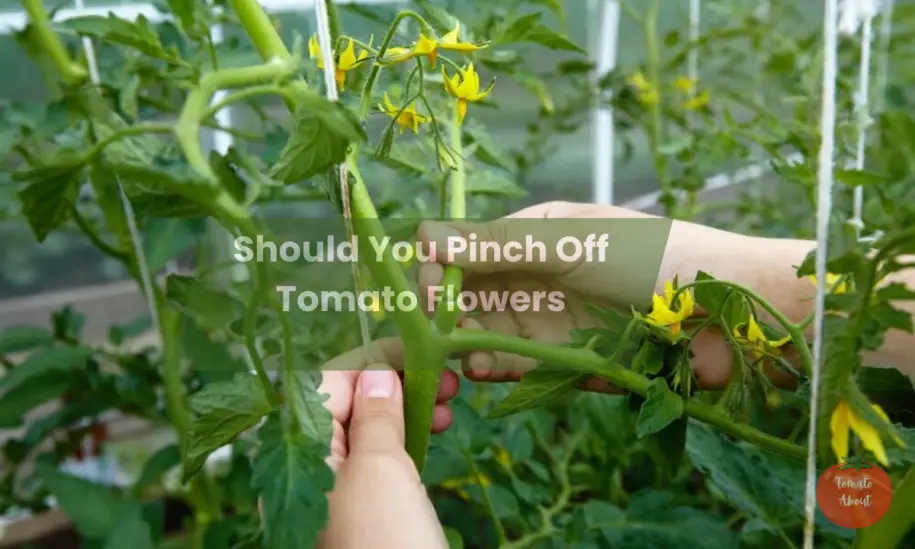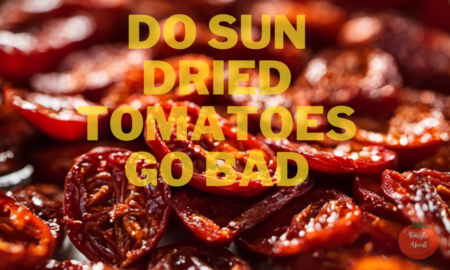For home gardeners, few things beat harvesting sun-ripened tomatoes fresh from your own backyard. But often, eager tomato plants will start pushing out flowers before they are ready to fruit. So, should you pinch off tomato blossoms or leave them be?
When my young tomato seedlings first formed flower buds, I was puzzled. Why are they already flowering, and will the plant suffer if I remove them?
Through trial and error, I learned the best practices for pinching tomato flowers to optimize fruit yields. Here is my complete guide to maximizing your tomato harvest through strategic flower pruning.
So, Should You Pinch Off Tomato Flowers?
Yes, you should pinch off the first several tomato flower trusses that form on young plants. This allows them to focus energy on robust vegetation growth instead of early fruiting. Continue removing flowers for 1-3 weeks after transplanting seedlings started indoors. Then leave blossoms so the established plant can begin producing tomatoes.
Why Do Tomato Plants Produce Flowers So Early?
Tomato flowers form so the plant can pollinate and produce fruits. Flowering is triggered when the plant reaches reproductive maturity, typically around 6-8 weeks old.
For seedlings started indoors or in small containers, the roots become confined quickly. This tricks the plant into thinking it has limited soil space. In response, hormones shift to divert energy towards fruiting early on.
While exciting to see blooms, allowing tomatoes to fruit too soon is counterproductive. Tiny, cramped plants cannot support both vigorous foliage expansion and fruit production.
Why should you Pinch off Tomato Flowers?
Giving tomato plants a trim seems counterintuitive. However, proponents believe directing energy away from flowers and fruits early on leads to greater rewards later.
When it comes to tomato flowers, should we pinch them off or let them be? Here’s why some gardeners play flower butcher:
Promotes Root Development
Transplant shock is real, even for plants! Moving to a new home stresses tomato seedlings.
Pinching back flowers post-transplanting allows recovery energy to focus down below on root growth. A robust underground foundation supports higher yields as the plant matures.
So snipping flowers transforms tender transplants from weak-rooted wallflowers into vigorous vegetable rockstars!
Avoids Pollination Pitfalls
Early blossoms and chillier spring temps don’t mix well. Tomatoes thrive in heat, but fruit set suffers if flowers open during cold snaps.
With fewer pollinators buzzing around, these first flowers often wither away unfertilized. Why waste energy on dead-end blooms?
Nipping flowers sidesteps pollination issues. The plant conserves resources for leaves and stems instead of fruitless flowers.
Fuels Foliage Growth
A tomato plant is only as strong as its leaves. More healthy foliage means more solar panels converting sunlight into energy.
Pinching back flowers promotes leaf and stem growth over fruit production. This leafy investment pays off with greater yields as the season progresses.
Prevents Puny Early Fruit
Eager early birds may get tomatoes, but puny ones. Allowing fruit set on immature plants stunts their growth.
Nipping those first flowers keeps plants focused on building vegetative vigor. Then they can flex their muscles later to support bumper crops.
Why should not to Pinch off Tomato Flowers?
While there are benefits to strategic flower pruning, don’t get flower-happy! Removing too many flowers or pinching at the wrong times can certainly limit your total tomato yield.
Here are some cases where you’ll want to keep those flowers:
- On Determinate Varieties – Determinate tomatoes are bred to grow to a compact size. Pruning flowers of determinate varieties like Roma tomatoes limits their genetic potential to produce. Let them flower and fruit freely.
- After Transplant Shock Passes – If blossoms appear within two weeks after transplanting, go ahead and pinch them back. But once the plant is established in its permanent home, allow flowers to develop. Continued pinching later stresses the plant.
- When Plant is Mature & Robust – Permit flowers on a healthy, vigorous indeterminate plant that has reached at least 2-3 feet tall. A large plant with adequate foliage and root system can support fruit production.
- Approaching End of Season – Late in the summer, stop removing flowers even on indeterminate types. Instead, pinch off malformed or very small fruits. Let the plant direct energy into ripening existing fruit before frost arrives.
Step-by-step guide to pinch off tomato flowers
Luckily, removing flowers from tomato plants is quick and easy:
- Use your fingers – Grasp the entire flower bud cluster (called a truss) and pluck it off where it meets the stem.
- Try tweezers for tiny buds – Some varieties have very petite blossoms that are easier to pinch with tweezers.
- Focus on removing trusses – You can pick individual buds, but it’s more efficient to remove the entire truss in one pinch.
- Act early – Catch buds when they are young before the plant wastes energy opening the flowers.
- Be consistent – Check plants every 2-3 days for new blossoms to stay on top of pruning.
When Should You Remove Tomato Flowers?
To avoid stunting plants, I recommend pinching off flowers for:
- 1-2 weeks after transplanting seedlings outside in warm weather. The shock of transplanting makes flowers non-essential initially.
- 2-3 weeks after transplanting in cooler temperatures. Plants need more time to establish when nights are cold.
- When plants are under 12 inches tall. Vegetative growth should take priority over fruiting until reaching over a foot tall.
- After allowing just 2-3 trusses to develop. The weight of extra fruits can bend fragile stems before they toughen up.
Use your best judgment based on climate, but these tips maximize growth potential. Personally, I let the 4th truss fully develop before leaving all flowers.
When to Stop Removing Tomato Flowers
You should allow blossoms to remain after:
- Plants adjust to outdoor conditions, about 1-3 weeks after transplanting.
- They develop vigorous foliage growth and sturdy stems.
- Root systems expand adequately in the final growing space.
- You have pinched off the first 3 trusses.
At this point, the plant should be robust enough to support both continued vegetative and fruit growth.
Personally, I fertilize with a tomato fertilizer high in phosphorus once I allow the 4th truss to develop. This powers the fruiting stage.
Troubleshooting Tomato Flowers Falling Off
Sometimes tomato blossoms fall off on their own, which can be concerning. But in most cases it’s completely normal. Here are some potential reasons for dropped flowers:
- Cold weather – As temperatures drop in fall, plants stop investing energy in fruition. Flowers abort as the plant goes dormant. Simply an end-of-season occurrence.
- Heat or moisture stress – Extreme heat and dryness can cause flowers to drop. Make sure plants have adequate water and mulch. Move containers to shady spots if temps exceed 85°F.
- Diseases or pests – Damaged roots, leaves, or buds from diseases or bugs can lead to flower drop. Inspect closely and treat any issues immediately. Common culprits are blossom end rot, blight, mosaic virus, aphids, and whiteflies.
- Over-fertilizing nitrogen – Too much nitrogen fertilizer fuels leafy growth over fruiting. Use a balanced tomato food once blooming begins.
As long as plants are healthy, occasional flower drop is no cause for concern. The plant will continue pushing new blooms all season. Just stay diligent on care and enjoy the fruits of your labor!
Frequently Asked Questions
How often should you check tomato plants for new blossoms to pinch off?
It’s recommended to monitor your tomato plants every 2-3 days for new flower trusses that need pruning. Being diligent allows you to stay on top of pinching them when they are very young and haven’t wasted energy opening up.
Can pinching flowers stunt the growth of tomato plants?
No, pruning flowers will not stunt growth. In fact, it promotes foliage and stem expansion in a plant’s early growth stage, allowing it to support more abundant fruit later on. The only risk of stunting comes from allowing too many fruits to develop before the plant is robust.
When should you start fertilizing tomato plants after transplanting?
Most experts recommend waiting 1-2 weeks after transplanting before beginning to fertilize. Choose a balanced tomato fertilizer to support healthy foliage and fruit production. Once flowering begins, use one higher in phosphorus to fuel the fruiting stage.
Wrapping up!
Knowing when to pinch tomato flowers takes some trial and error as you learn your climate and preferred varieties. Following these best practices will set your plants up for success.
The most important takeaway is to postpone allowing fruit set until after plants are well established outside in their permanent growing space. This ensures they develop strong roots and foliage before focusing energy on tomatoes.
With tasty homegrown tomatoes, patience always pays off! Just be diligent in caring for your plants, and you’ll be rewarded with a bountiful harvest.



